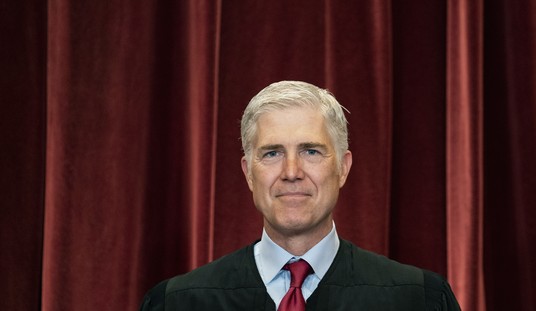
“All that Swinging Sixties. It didn’t do anyone any good, did it? Easy sex and the Pill. Marriages were ruined. I never did approve. I never really enjoyed the sex.”
***
I suspect I’d have been more impressed by The Ice Storm had I seen it in a theater the year it came out (1997) instead of on DVD this week.
The film, set in 1973 suburban Connecticut on Thanksgiving weekend, is undeniably stylish and even coldly haunting in parts, like the best work of Alex Colville.
However, Ang Lee’s “Asian” appreciation of social pecking orders (he is a great admirer of Ozu), which were on display in his previous film, Sense and Sensibility (1995) was underused in The Ice Storm, because everyone belongs to the same affluent class.
As well, too many bits of business that might have seemed fresh in 1997 – like the stoned girl’s head flopping onto one boy’s crotch; another boy’s death echoed in a Fantastic Four panel – now seem corny.
The Ice Storm is best remembered fifteen years later for its “key party” sequence.
(See this “controversial” 2003 parody ad for the Toyota Corolla):
http://www.youtube.com/watch?v=WfV_lsJZ8u0
These “key party” scenes in The Ice Storm aren’t particularly thrilling, or even salacious. We remember them because we wonder: did suburban 1970s squares really try to get in on the younger generation’s “free love” hijinks a few years after the fact?
A survivor of London’s “Swinging Sixties” told me he’d participated in one of these “spin the bottle for grown ups” get-togethers, but he’s my only primary source. It’s possible these suburban wife swapping “affairs” are an urban legend, like “rainbow parties” or “bra burning,” which only became “real” after someone invented them and spawned a moral panic.
I’m not spoiling much when I tell you that nobody at the “key party” in The Ice Storm has a great “swinging” experience. Almost everyone involved is bitter or reluctant beforehand, or miserable later.
You might think this is because the movie was made in 1997, twenty five years after the fact, and reflects society’s reluctant acknowledgement that the freewheeling 1960s and 1970s were a long, loud, colorful multi-generational social disaster of the first order. (Albeit with a decent soundtrack.)
The filmmakers of the Easy Riders, Raging Bulls era were supposedly overturning the studio system and its rigid Production Code, which demanded that sinners and villains die at the end of every movie, pour encourager les autres.
But looking back on films made during the 1960s and 70s, many of the most iconic ones are more like melodramatic morality plays than commercials for the sexual revolution.
Take some of the movies the adult characters in The Ice Storm would likely have gone to see:
Is the Alfie of 1966 really having a fabulous time?
What about his female counterpart in Darling (1965), who slept her way to the top, and ended up like this:
http://www.youtube.com/watch?v=KYHfiXkICQc
The slogan for the movie Bob and Carol and Ted and Alice (1969) was “Consider the possibilities.” The “liberated” would-be participants in a foursome can’t bring themselves to go through with it, even half-stoned, and end the film fighting vainly the old ennui, to the ironic accompaniment of Bacharach/David faux-hippie confection, “What the World Needs Now Is Love”:
http://www.youtube.com/watch?v=uyGDegzAqSw
Seriously — do you really want to model your life on these people?
The bittersweet conclusion of The Graduate (1967) hints that the thrill of giving the finger to Tradition and Convention doesn’t last more than a minute or two:
Pretty much any scene in Carnal Knowledge (1971) might inspire you to blow your brains out. Here (with an EXTREME CONTENT WARNING), we learn that Jack Nicholson’s sexual palette is so jaded, and the arousal groove in his brain so calcified, that he has to pay a long suffering prostitute to follow an erotic script, to the letter. (My apologies for the subtitles):
Released the same year, Bonnie and Clyde (1967) has been called “the most important text of the New Left,” and is said to have ushered in the new cinematic promiscuity. But while the anti-heroes are gorgeous indeed, Clyde is impotent, and both characters die at the end.
(Just like the rootless leads in Easy Rider (1969), of course. It’s every right winger’s favorite thirty seconds of film, with PJ O’Rourke asking, “And what’s life for if you never get a chance to shoot the likes of Peter Fonda and Dennis Hopper?”)
Warren Beatty’s bed-hopping hair stylist in Shampoo (1975) ends up alone.
The photographer in Blow Up (1969), modeled on Swinging London sexual superstar David Bailey? Possibly insane. Or worse.
What about that pean to pansexual “thing-doing,” The Rocky Horror Picture Show (1975), which concludes with the destruction of the castle, and the “sweet transvestite” taken into custody by his alien overseers, one of whom sings:
Frank N. Furter
It’s all over
Your mission is a failure
Your lifestyle’s too extreme
Sometimes there’s an insinuated “higher” purpose to these “downer” conclusions (“See, McMurphy HAD to die because The Man didn’t want him to be FREE!”)
But most of the time, these “everybody ends up empty and miserable” endings seem as didactic as Reefer Madness.
In his new book, Coming Apart: The State of White America, Charles Murray declares that the oft-despised white, upper class coastal elites — like the protagonists in The Ice Storm — have (at least according to his number crunching) become the new “salt of the earth.” Looking at their surprisingly low divorce/incarceration/drop out rates, Murray says this demographic’s secret to success is that it “talks Sixties, but lives Fifties.”
Likewise, so many seminal 60s and 70s films tease a message of liberation, but pull the trap of the gallows in their final last moments.
Why? Without the supposedly evil Hays Code to hamper them, why did all these daring young moviemakers keep employing the old tropes of cosmic justice? Residual Catholic or Jewish guilt? Lack of imagination? Did they find that “playing tennis without a net” wasn’t much fun after all?
What is it about people and movie endings, anyway? Never mind Rocky Horror; what about gangsta wannabes who can recite all the dialogue from Goodfellas and Pacino’s Scarface, neither of which end terribly well.
It’s as if the seductive glamor of the first two acts inoculates viewers to the brutally punitive third.
(Note that Catholics renewing their baptismal vows every year are called upon to reject “the glamor of evil.”)
So:
Did big bad Hollywood really lead us into temptation during the 60s and 70s?
Or did the rest of us take away the wrong messages from all these films?
Share your theories in the comments.








Join the conversation as a VIP Member